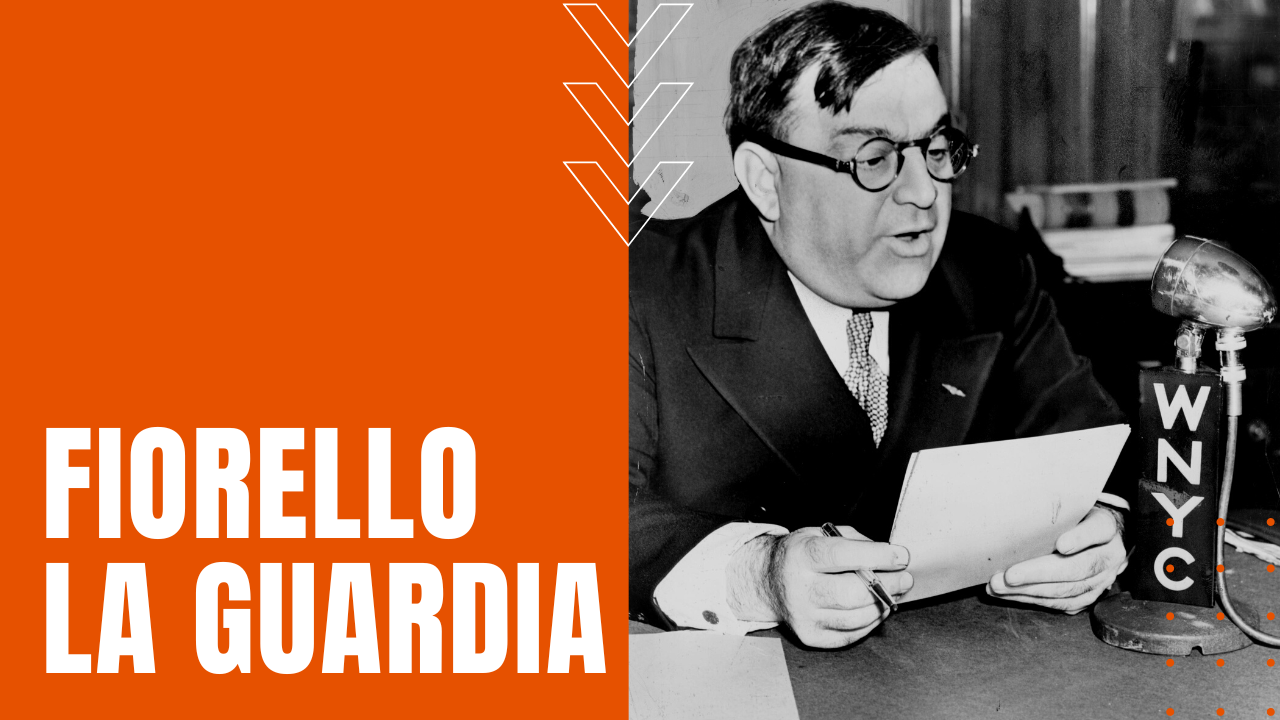Fiorello La Guardia

Born in 1882 Greenwich Village New York, the son of an Italian immigrant father and a Jewish mother from Trieste, early in his political career, Fiorello La Guardia won and lost a string of elected offices, including two congressional seats in the U.S. House of Representatives and President of the New York City Board of Aldermen.
Elected Mayor of New York City
Elected mayor of New York City in 1933 as a Fusion Party candidate—soon to crush a centuries-long string of corrupt Tammany Hall bosses—the five-foot-tall portly Republican was fluent in a number of languages, including Italian, German, Yiddish and Croatian.
Combined with his energetic, can-do personality to resonate with the melting pot diaspora of New York City’s immigrant voter base for the next twelve years to come.
Tough on Crime
Considered by many political historians as the greatest mayor in U.S. history, La Guardia criticized the gangsters who brought negative stereotypes to New York’s thriving Italian community, going after mob bosses like Lucky Luciano and Frank Costello in his frequent radio addresses, stating “Let’s drive the bums out of town.”
In 1934, after rounding up thousands of Costello’s one-armed bandits, La Guardia bashed a number of slot machines with a sledgehammer before dumping them ceremoniously into the Long Island Sound. Working with the special prosecutor and future Republican presidential candidate Thomas E. Dewey, La Guardia led a successful investigation into Luciano’s prostitution ring, eventually sending the mob boss to prison on a 30 to 50-year sentence.
Builds New York during the Great Depression
During the hardscrabble years of the Great Depression, La Guardia’s close relationship with President Franklin D. Roosevelt and his New Deal reforms witnessed $1.1 billion in federal stimulus money pour into New York City infrastructure projects, working closely with La Guardia’s powerful Parks Commissioner Robert Moses to build the West Side Highway, the East River Drive, Brooklyn’s Battery Tunnel, the Triborough Bridge plus two regional airports, now known as La Guardia and JFK, at the same time presiding over the 1939 World’s Fair at Flushing Meadows and the public takeover of the New York City Subway system.
Shortly before America’s entry into World War Two, FDR appointed La Guardia as the first director of the Office of Civilian Defense or OCD, giving La Guardia full oversight over the mobilization of thousands of volunteers in such capacities as air raid wardens and the creation of blackout protocols and the installation of air raid sirens and shelters in the worrisome likelihood that German or Japanese bombers could some day reach American shores. He also created the Civil Air Patrol, juggling three days a week in Washington OCD director, followed by four days a week as New York City’s major.
He passed away from pancreatic cancer on September 20th, 1947, making Fiorello La Guardia, one of the boldest leaders in 20th century America.
